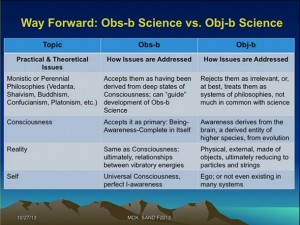A suggestion has been made elsewhere in these columns that “Vedanta differentiates between what is called ‘sharp’ intellect (tIkShNa buddhi) and ‘subtle’ intellect (sUkShma buddhi).”
Experienced Vedantins may differentiate ‘sharp intellect’ from ‘subtle intellect’ in trying to make a point in order to explain contextually some specific concept they would like to amplify on. But it is doubtful if Advaita Vedanta itself has anywhere highlighted the difference between ” ‘sharp’ intellect (tIkShNa buddhi) and ‘subtle’ intellect (sUkShma buddhi).” If we ask whether there is a vedAnta vAkya or shruti mantra to support a claim of difference between the two types of buddhi, the answer is perhaps a resounding “No.”
Vedanta does, of course, contrast ‘sUkshma‘ in relation to ‘sthUla‘ form of many entities (e.g. sharIra, buddhi, loka-s). Bhagavad-Gita too talks of a stratified order from gross to finer when referring to objects to sensory organs to mind to buddhi &c.
****
There is also an idea promoted in some quarters that ‘sharp’ intellect (tIkShNa buddhi) is useful more often in Science whereas ‘subtle’ intellect (sUkShma buddhi) is utilized in Vedantic study. The reason given is that “The former is the analytical mind characteristic of the scientist [whereas] the latter [i.e.] the ability to integrate rather than divide [is the requirement of Vedanta], to see the unity in diversity.” Continue reading





